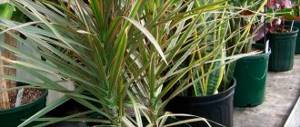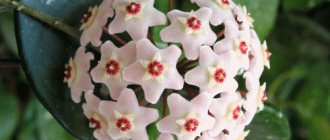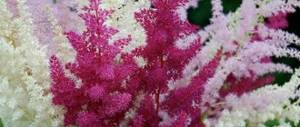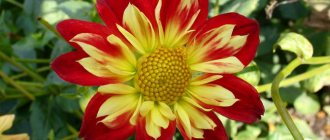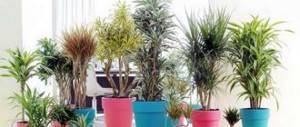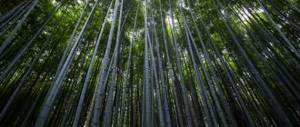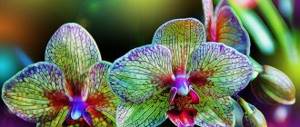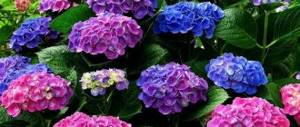The most popular living trees growing at home or in an apartment in a pot
Indoor living trees, unlike other indoor flowers, have a central trunk and branches . Some of them bloom at home, in other cases the tree has a lush crown. Thanks to pruning, they can be shaped. The most popular is to create Bonsai from them. Indoor pets perform a decorative function and, in addition, freshen the air .
They are used for landscaping apartments, offices and commercial premises. Large, beautifully flowering, and deciduous trees can come in a variety of shapes. They also differ in the shape and color of the leaves. Features of the most popular species that grow in flower pots will allow you to turn your room into a blooming garden.
A coffee tree
A unique plant of its kind with beautiful foliage. At home, it blooms and pleases all year round with its greenery. In place of the inflorescences, berries are later formed. The leaves appear dense, shiny and textured.
A coffee tree
With proper care, its height can reach 1 meter . The crown is formed by pinching. It tolerates drought well; it is recommended to wipe the leaves with a damp cloth.
Monstera
Monstera is a common indoor flower in apartments. An adult tree is quite tall and spreading . The leaves are large, with symmetrical slits. The color of the leaves is bright green and shiny. The monstera leaf is dark green in color and shiny. Over time, aerial roots form in the lower part. There is no need to remove them; they provide the plant with support and additional nutrition. Blooms rarely, with white inflorescences.
Monstera is suitable for large spaces. The height can reach 3-5 meters .
Bonsai
The spread of the indoor tree in a flat pot originated in China, later in the West and Japan. The creation of Bonsai has become a whole science. A miniature copy of a tree with a powerful crown has its own characteristics.
- Bonsai is considered to be an indoor plant with a strong trunk and a well-developed root system ;
- the branches must have a clear outline, they can have a curved shape;
- the trunk should not be hidden in the foliage; its ratio is kept to a minimum;
- The pot used is flat, often clay, and discreetly colored.
Florists will classify bonsai by size and shape. Care requires some knowledge of the characteristics of this variety.
Lemon
An exotic houseplant is not only beautiful, but also useful. With proper care, it bears fruit all year round . There are many varieties, they differ in tree height, leaf shape and fruit.
Productivity lasts up to 20 years . The leaves are bright green and dense. They are used for brewing tea. Thanks to its unique properties, lemon helps purify the air.
He is afraid of drafts, if he is comfortable in one place, there is no need to move him again.
Lemon Tree
Chinese rose
A beautifully blooming rose can grow to gigantic sizes . The trunk is tree-like; the older the flower, the stronger the crown grows. The shape can be adjusted by trimming. It blooms with large scarlet inflorescences. Scientifically called hibiscus.
Suitable for indoor and greenhouse cultivation. Propagated by seeds, dividing the bush, layering and cuttings. Easy to care for, it will decorate any room with its presence.
Ficus
The evergreen tree can be found in warm Asian countries. We grow it at home. The leaves are dense, oval in shape. The leaf color is green or bicolor.
It rarely blooms with unsightly-looking inflorescences. Florists use different types of ficus to create bonsai. The height of an adult flower can be 3-5 meters. Propagated by cuttings. It is recommended to apply fertilizer 2-3 times a month. If not properly cared for, the leaves may fall off completely.
In ancient times, laurel was considered sacred. Today, Europeans use the evergreen plant in landscape designs. A noble tree with fragrant leaves, it is often grown in kitchens for use as a seasoning .
- leaves are dense, dark green;
- the bush grows slowly, is not afraid of pruning;
- laurel loves bright and spacious rooms;
- After flowering, seeds form in place of the inflorescences.
An unpretentious indoor flower will not cause much trouble; it will become a worthy interior decoration. In the summer, pots with laurel can be taken out onto the balcony or loggia.
Laurel
Tangerine
A sunny and elegant tangerine tree will become a bright element of landscape design of premises. The plant releases special substances that enrich the air .
Mandarin repels insects and produces good yields of fragrant fruits. You can often find dwarf varieties of mandarin on windows. The leaves are dense and green. The trunk is tree-like. It blooms with small flowers, in place of which green tangerines are formed. When ripe, the fruits turn orange.
Bottled
The tree, whose trunk is shaped like a bottle, can be found in nature in Mexico and the USA. Scientific name: nolina, bocarnea. The leaves are palm-shaped, thin with pointed edges. Grow in small pots.
The plant loves the sun, is not afraid of drought, but still requires regular spraying. 6-8 years to get a large trunk . If you water abundantly, the trunk will rapidly stretch upward, so you need to organize drought conditions.
bottle tree
Zmeinoye
A real miracle, rarely does anyone manage to grow it correctly and enjoy flowering. The flowering period occurs after 5-6 years . Until this moment, the plant resembles a snake. Later it rushes upward and forms a tree. The buds look mesmerizingly beautiful, but at the same time they emit a sickening smell . Those who decide to place it in a residential area must take this fact into account.
When growing compact trees at home, do not forget that this is painstaking work. It will take several years to get an original bonsai. You can buy a ready-made tree or get cuttings from friends. There are no particular difficulties in care, you just need to take into account their features.
Indoor trees, their replanting
For all ornamental trees there is one principle of care - correct and timely replanting. Indoor trees grow faster and better depending on the pot. The more space a plant has, the faster it will grow.
If you want to grow a small tree, then when replanting, use a pot that is only a little larger. This rule applies only to young plants.
Tree replanting is carried out:
- The first few years - no more than 2 times a year.
- Subsequent years - every 3-5 years.
But it is advisable to update the soil annually. This is done this way:
- Remove some of the soil from above.
- Add new soil rich in useful components.
To prevent the tree from growing, it is enough just to change the soil, without changing the pot.
Placing plants in your home is not only about adding beauty and comfort to it. Greenery can improve air quality by absorbing carbon dioxide. Indoor trees perform this function perfectly.
20.10.2017
From time immemorial, indoor trees and flowering plants have created a cozy atmosphere at home, bringing happiness and love, peace and tranquility to their owners.
But home gardening is becoming especially relevant right now, in the intense pace of life in large cities. After the abundance of concrete, glass and metal, people have an urgent need to create a small green oasis at home to communicate with wildlife.
Indoor trees of various types (coffee, lemon, dollar, money), as well as small flowering potted crops for growing on window sills and shelves (Saintpaulia, spathiphyllum, low-growing varieties of Chinese rose) are ideal for this.
Indoor trees and flowers can not only feel, but also create a mood for their owners. Living plants in the house relieve stress and fatigue, give love and happiness, ennoble the interior, help purify the air from pathogens and create a special indoor microclimate. Not a single, even the most expensive composition of artificial and cut flowers can replace fresh flowers growing in pots in the house.
All plants in the house are classified according to three large groups:
- Decorative deciduous. These include indoor trees and various plants whose aesthetic value lies in their beautiful leaves. The leaves can be light and dark green, variegated marbled in color, and also have such bright colors that they are quite capable of replacing flowers. Plants with original leaf shapes are widely used in the interior - linear, lobed, with a dissected or jagged edge.
- Decorative flowering. These include both perennial plants that bloom all year round, as well as annual and tuberous potted plants with a seasonal flowering period. Perennial flowering crops, unlike annual ones, remain decorative for a long period and do not die after flowering. Tuberous flowering plants have the peculiarity of falling asleep in winter after the flowers and leaves fall off. Annual plants are widely used in the interior to create short-lived but beautiful compositions of fresh flowers.
- Cacti and succulents. These include representatives of various families, similar in biological and external characteristics. The plants are stable and unpretentious when kept indoors, compact and have an incredible variety of shapes. Due to its unique properties, as well as exclusively decorative flowering, this group of plants has become widespread in indoor culture.
Many ornamental plants are also fruit plants, delighting their owners with tasty and healthy fruits (lemon and tangerine trees).
What crops are most common in indoor floriculture and why are they remarkable? A mini-rating of the most famous houseplants includes:
The most popular home tree 3 letters
Answer to a scanword or crossword puzzle for the question: tree 3 letters
Beech
Beech is a powerful and slender tree
Elm
Dahl in the famous dictionary adds that the elm tree is “one of the most flexible, from which ties, rims, and runners are made.”
Geek
- a horizontal spar attached to the mast at a small height above the deck and with its free end facing the stern of the ship
Fiberboard
(fibreboard) - a board building material that is made from waste from the wood processing industry (chips, knots, sawdust), cellulose is also used, fillers and polymer components are added to this mixture so that the fiberboard is not afraid of moisture, rosin or paraffin is added
Dej
Woodworking, pulp and paper, food industry
Chipboard
(chipboard) - sheet material that is made from waste from the wood processing industry (chips, sawdust, shavings) and a mixture of resins that hold this composition together
Oak
The greatest importance in the forestry of the former USSR is the pedunculate oak, or summer oak (Quercus robur), a tree up to 40-50 m high and 1-1.5 m in diameter. The leaves are elongated, obovate, with 5-7 pairs of short lobes, on long petioles up to 1 cm
Spruce
In the European part, from the northern border of the forest to the northern border of the chernozem, the common spruce, or European spruce (Picea abies, or Picea excelsa), grows, a tree 20-50 m high and up to 1 m in diameter. Fruits from 15, in plantations from 25-30 years
Willow
Willow, or pussy willow, is a tree symbolizing grief and sadness.
Yin
Yin-Yang are understood as polar modalities of a single substantial principle - Qi, and the stages of their maturity correspond to the five elements, where wood and fire correspond to Yang, metal and water - Yin, and earth is neutral
Kur
Instrument making, textile, woodworking, food industry
Kush
During the era of the Old Kingdom (3rd millennium BC), the Egyptian pharaohs sent trading caravans and predatory expeditions to Kush for slaves, livestock, ebony, ivory, and so on.
Loch
How ornamental plants are cultivated (sometimes run wild) Elaeagnus angustifolia is a low, prickly tree with silvery elliptical leaves, as well as the most frost-resistant North American silver elk (Elaeagnus argentea).
Paradise
Every tree in paradise bears fruits suitable for humans, including the tree of life (immortality) and the tree of knowledge, which is traditionally the apple tree.
Ray
- a spar tree suspended from the middle using a bayfoot to a mast or topmast for setting sails or for attaching signal halyards
Thuja
Western thuja, or life tree (Thuja occidentalis), a low tree with a pyramidal or ovoid crown, is cultivated (weeping, dwarf, variegated forms) in gardens and parks of European countries; in Russia - in the steppe and forest zones to Arkhangelsk, in Siberia, in the Far East
Yan
Yin-Yang are understood as polar modalities of a single substantial principle - Qi, and the stages of their maturity correspond to the five elements, where wood and fire correspond to Yang, metal and water - Yin, and earth is neutral
Types of wood for building a house
In Russia, coniferous trees predominate: pine, spruce, fir, cedar, larch.
In areas where there are no coniferous forests, deciduous trees such as birch, aspen, poplar and oak are used for the construction of frame houses. These types of wood require special treatment against insects, as well as to prevent the process of rotting. If this treatment is not carried out, the service life of deciduous trees is several times shorter than the service life of coniferous trees. Now the building materials market in any area is saturated with offers for the sale of various types of wood. For this reason, people do not have any difficulties with what kind of wood to build a house from.
Coniferous wood is most often used for construction because it:
- does not rot;
- has a high degree of strength;
- practically does not conduct heat;
- has an open structure and allows air to pass through;
- has antiseptic properties.
However, the characteristics of different coniferous species differ significantly from each other. Therefore, the question of which tree to choose for building a house is quite difficult. If we talk about price and level of demand, pine and spruce are the leaders. Pine is very resistant to rot. According to the Russian hardiness scale, spruce wood has a rating of 3.6, and pine wood has a rating of 4.6. Of course, in Ancient Rus' I had such a scale, but the first crowns of houses were always made of pine.
Spruce walls allow air to pass through well, allowing you to create the most comfortable microclimate in all rooms. This is probably why the old Russian proverb arose: “Even though the hut is a fir tree, the heart is healthy.” As a rule, poor people built houses from spruce. In addition to its low cost, spruce wood has other advantages, for example, it has healing properties - it emits phytoncides into the atmosphere, which contribute to the healing of the entire human body. The structure of spruce is loose, not as dense as that of pine, and therefore its thermal conductivity coefficient is lower. A spruce house is warmer than a pine one.
Also, one of the best types of wood for construction is larch. High resin content provides reliable protection against rotting. This tree also has high density and strength. Houses made of larch are quite often built in Siberia. In this region there are buildings that are 200 years old or more. In the United States of America, larch flooring is still practiced in buildings with high traffic. Supermarkets and other retail spaces are a prime example. This type of floor lasts longer than synthetic flooring. But larch also has a drawback - it is difficult to process due to its high density, strength and resin content. In addition, it is not cheap.
Cedar is a soft and easy-to-work wood species. It has a very interesting structure and beautiful, unusual shades.
Cedar also has healing properties similar to those of spruce. However, cedar wood is rarely used for construction; most often it is used as a finishing material and raw material for making furniture.
In Rus', they did not always choose one type of wood for building houses. It was common practice to use several options at once:
- piles, door and window openings were made from oak;
- Floors and rafters were made from spruce;
- walls were built from pine;
- from larch - the lower crowns of the frame;
- Baths were built from linden and maple and furniture was made.
Indoor trees - an oasis in a city apartment
It’s hard to even imagine how joyless and dreary our lives would become if we excluded the usual indoor plants from the interior of our houses. Despite the fact that living vegetation is now noticeably replaced by analogues made from artificial materials, experts still consider this design direction to be very promising. Particular attention is paid to indoor trees - large tub plants taller than one meter.
Volumetric plants, like sculptures, add uniqueness, sophistication and style to a boring interior. Moreover, these seemingly insignificant accessories can become key elements of the design of the room. It is not surprising that decorative trees are now increasingly used to decorate not only city apartments, but also areas of shopping and entertainment centers, free space in offices and shops - after all, indoor plants have many useful properties.
What are the benefits of indoor trees in an apartment?
1. Indoor trees in a city apartment are a constant source of oxygen released to replace the absorbed carbon dioxide. Some plants exude significant amounts of phytoncides and essential oils, destroying pathogens. In addition, dust particles in the air space of a residential apartment are filtered.
2. Green trees can increase indoor air humidity. When moisture evaporates, the air in the room with plants cools significantly.
3. Thanks to their green color, domestic trees have a calming effect on people. Moreover, they help in dealing with everyday stress.
4. With the help of green plants, any room will become more cozy and comfortable. Even the most boring interior will attract attention with its freshness and originality if you add ordinary indoor trees to it.
5. Houseplants do an excellent job of dividing space into several separate functional areas. Large trees or shrubs serve as natural partitions, which makes it possible to avoid complex rearrangements when renovating a room.
6. Indoor vegetation, due to its unique texture, allows you to soften some architectural elements. In an interior where there are cold surfaces and rigid structures, decorative trees perform a revitalizing function, creating a harmonious and balanced atmosphere.
7. Indoor trees can also be used to liven up the corners of rooms. Often purchased furniture does not fit well into the corner space, resulting in this part of the room looking empty and unfinished. A large tub with a home tree will hide this drawback without cluttering up the space at all.
How to find “your” tree?
There are many varieties of indoor trees, so choosing a house plant for a specific interior will not be easy. You can buy an adult plant right away, however, you should remember that such a purchase will cost a considerable amount. Young plants are much cheaper. True, you will have to put in a lot of effort and be patient, because indoor trees take a long time to grow. To better understand which tree is suitable for your room, you should familiarize yourself with the main types of tub plants.
Ficus
Very easy to care for. At the same time, he is very handsome. And the many types of this tree will allow every beginning gardener to choose the most suitable option. Experts advise paying attention, first of all, to such varieties of ficus as Bengal, rubber and lyre-shaped.
Bonsai
It can be called a real tree in miniature. When growing it, an ordinary tree is taken as the basis, which is systematically pruned to give it a suitable shape.
Hibiscus
Known as "Chinese rose". The plant can reach gigantic sizes - up to 5 meters. It has very beautiful flowers.
Citrus trees
They have a beneficial effect on human well-being. Tangerines, lemons and oranges are popular among indoor citrus trees.
Camellia
It is considered one of the most difficult plants to care for. Experts advise novice gardeners to think carefully before purchasing this indoor tree. However, if the outcome is successful, camellia will delight you with unique flowers, the diameter of which can range from 6 to 12 cm.
Dracaena Sandera
Or Chinese reed has nothing to do with its name, although it looks very much like a reed vine. Among sellers, this tree has a different name - “bamboo of happiness” because of its ability to attract positive energy, happiness, good luck and good mood into the house.
Abutilone
Or the “indoor maple”, when flowering, throws out buds that resemble multi-colored lanterns. This plant is very unpretentious.
A coffee tree
Can be recognized by the sweet aroma that appears during the flowering period. This plant can reach a height of over two meters. With good care, the coffee tree will systematically bloom and bear fruit. According to flower growers, this plant can produce up to 500 grams of coffee beans annually, almost as good as the Brazilian drink.
Crassula
Crassula or money tree is considered a symbol of prosperity. Many people believe that this plant brings abundance and good luck in business to the home. The money tree will fit perfectly into any design. Due to its unpretentiousness, it is suitable even for those who do not have the skills and time to care for indoor plants.
When purchasing an indoor tree, be sure to ask the seller how to properly care for your new green friend. Each plant needs certain conditions of watering, fertilizing and replanting. In addition, it is important to know where it is best to place the purchased tree. If the selected plant does not require a special approach, then it is recommended to adhere to the general rules for arranging indoor flowers:
- vegetation does not like drafts;
- Do not place trees near radiators or heaters.
A coffee tree
Coffee grows in the hot tropical climate of Africa. The coffee tree loves warmth and humidity. In order for it to grow well, it needs to be placed in a warm, well-lit place. The room must maintain a stable temperature of at least 18 degrees. In winter, you should not place the seedling on the windowsill: the lump of earth in the pot may cool down and the sprout will die.
If the seedling is well cared for, regularly watered and sprayed, in favorable conditions it will grow up to 1.5 meters. The stem thickens, forming a trunk, which is crowned by a spreading crown covered with wavy greenery. Flowering occurs twice a year: in spring and autumn. Small white flowers exuding a delicate aroma turn into green coffee beans.
Some tips for those who have already acquired indoor trees
1. It is better to place all house plants near a window, since trees need natural light. If the windows in the room face north, then this placement option will be your only one, otherwise the trees will not be able to receive enough daylight.
2. Decorative trees should not disturb those living in the apartment. It is necessary to ensure that there is a good approach to windows and furniture. And even more so: house plants should not restrict movement in the corridor or on the landing.
3. It is necessary to take into account that house plants add a rich green color to the interior of the room. The thicker the crown, the denser the green spot. Greens that are too dense can cause a feeling of heaviness and weight. In order to avoid this, the tree crown must be periodically thinned. Remember that decorative trees should not overload the interior.
4. You should not allow a situation where indoor trees grow to the height of a person and climb higher. The crowns of plants should not block half the walls and ceiling, otherwise the plants will dominate the interior. This should not happen, since home trees are designed to decorate, and not to block the created interior, suppressing a person.
5. Each plant should be chosen in a beautiful, proportional pot. Indoor trees always attract attention, so they need to look the part. The size and quality of the pots should match the size and appearance of the plants. The soil should be poured carefully. Dry leaves and branches should be removed in a timely manner, as they terribly spoil the appearance.
6. Due to the hardness of tap water, watering indoor trees should be done only with settled liquid. After settling, impurities settle to the bottom, and the water becomes much softer.
7. To replant indoor trees, you should use soil purchased from a specialized store. Such soil is cleared of harmful larvae and enriched with microelements necessary for plants.
Following the care requirements for your specific indoor trees will allow you to achieve excellent results. Many days of effort will certainly pay off, and you will be able to create a stunning interior with live indoor plants - a kind of oasis in an ordinary city apartment.
Coniferous wood houses
Today, when choosing wood for construction, many people are guided by its cost. Quite often, preference is given to pine specifically for construction, and spruce is used for finishing. The reason for this is the minimum number of knots and smooth, light texture.
To build a house, choose high-quality, dry wood. If it retains natural moisture, the house will shrink over several years. Therefore, our ancestors framed doors and windows with oak wood, which easily withstood this process.
For construction, a rounded, debarked log with a preserved protective layer is used. Such a house is naturally protected from rotting, but it is still better to treat it with a special impregnation. Rounded logs do not have a protective layer; their processing is not preferable, but mandatory. Externally, houses made from such logs are more attractive than buildings made from round logs, but they are not as practical.
Timber is quite popular in the construction of private housing. It is technologically easier to work with; no additional finishing is required inside and out. This wood itself serves as a wonderful decoration.
The most popular living trees growing at home or in an apartment in a pot
Indoor living trees, unlike other indoor flowers, have a central trunk and branches . Some of them bloom at home, in other cases the tree has a lush crown. Thanks to pruning, they can be shaped. The most popular is to create Bonsai from them. Indoor pets perform a decorative function and, in addition, freshen the air .
They are used for landscaping apartments, offices and commercial premises. Large, beautifully flowering, and deciduous trees can come in a variety of shapes. They also differ in the shape and color of the leaves. Features of the most popular species that grow in flower pots will allow you to turn your room into a blooming garden.
A coffee tree
A unique plant of its kind with beautiful foliage. At home, it blooms and pleases all year round with its greenery. In place of the inflorescences, berries are later formed. The leaves appear dense, shiny and textured.
A coffee tree
With proper care, its height can reach 1 meter . The crown is formed by pinching. It tolerates drought well; it is recommended to wipe the leaves with a damp cloth.
Monstera
Monstera is a common indoor flower in apartments. An adult tree is quite tall and spreading . The leaves are large, with symmetrical slits. The color of the leaves is bright green and shiny. The monstera leaf is dark green in color and shiny. Over time, aerial roots form in the lower part. There is no need to remove them; they provide the plant with support and additional nutrition. Blooms rarely, with white inflorescences.
Monstera is suitable for large spaces. The height can reach 3-5 meters .
Bonsai
The spread of the indoor tree in a flat pot originated in China, later in the West and Japan. The creation of Bonsai has become a whole science. A miniature copy of a tree with a powerful crown has its own characteristics.
- Bonsai is considered to be an indoor plant with a strong trunk and a well-developed root system ;
- the branches must have a clear outline, they can have a curved shape;
- the trunk should not be hidden in the foliage; its ratio is kept to a minimum;
- The pot used is flat, often clay, and discreetly colored.
Florists will classify bonsai by size and shape. Care requires some knowledge of the characteristics of this variety.
Lemon
An exotic houseplant is not only beautiful, but also useful. With proper care, it bears fruit all year round . There are many varieties, they differ in tree height, leaf shape and fruit.
Productivity lasts up to 20 years . The leaves are bright green and dense. They are used for brewing tea. Thanks to its unique properties, lemon helps purify the air.
He is afraid of drafts, if he is comfortable in one place, there is no need to move him again.
Lemon Tree
Chinese rose
A beautifully blooming rose can grow to gigantic sizes . The trunk is tree-like; the older the flower, the stronger the crown grows. The shape can be adjusted by trimming. It blooms with large scarlet inflorescences. Scientifically called hibiscus.
Suitable for indoor and greenhouse cultivation. Propagated by seeds, dividing the bush, layering and cuttings. Easy to care for, it will decorate any room with its presence.
Ficus
The evergreen tree can be found in warm Asian countries. We grow it at home. The leaves are dense, oval in shape. The leaf color is green or bicolor.
It rarely blooms with unsightly-looking inflorescences. Florists use different types of ficus to create bonsai. The height of an adult flower can be 3-5 meters. Propagated by cuttings. It is recommended to apply fertilizer 2-3 times a month. If not properly cared for, the leaves may fall off completely.
In ancient times, laurel was considered sacred. Today, Europeans use the evergreen plant in landscape designs. A noble tree with fragrant leaves, it is often grown in kitchens for use as a seasoning .
- leaves are dense, dark green;
- the bush grows slowly, is not afraid of pruning;
- laurel loves bright and spacious rooms;
- After flowering, seeds form in place of the inflorescences.
An unpretentious indoor flower will not cause much trouble; it will become a worthy interior decoration. In the summer, pots with laurel can be taken out onto the balcony or loggia.
Laurel
Tangerine
A sunny and elegant tangerine tree will become a bright element of landscape design of premises. The plant releases special substances that enrich the air .
Mandarin repels insects and produces good yields of fragrant fruits. You can often find dwarf varieties of mandarin on windows. The leaves are dense and green. The trunk is tree-like. It blooms with small flowers, in place of which green tangerines are formed. When ripe, the fruits turn orange.
Bottled
The tree, whose trunk is shaped like a bottle, can be found in nature in Mexico and the USA. Scientific name: nolina, bocarnea. The leaves are palm-shaped, thin with pointed edges. Grow in small pots.
The plant loves the sun, is not afraid of drought, but still requires regular spraying. 6-8 years to get a large trunk . If you water abundantly, the trunk will rapidly stretch upward, so you need to organize drought conditions.
bottle tree
Zmeinoye
A real miracle, rarely does anyone manage to grow it correctly and enjoy flowering. The flowering period occurs after 5-6 years . Until this moment, the plant resembles a snake. Later it rushes upward and forms a tree. The buds look mesmerizingly beautiful, but at the same time they emit a sickening smell . Those who decide to place it in a residential area must take this fact into account.
When growing compact trees at home, do not forget that this is painstaking work. It will take several years to get an original bonsai. You can buy a ready-made tree or get cuttings from friends. There are no particular difficulties in care, you just need to take into account their features.
Types of indoor plants
There are many house plants, which are divided into 3 large groups:
- Blooming . This group includes perennial and annual crops. Annual tuberous plants are often used to decorate the interior. Their flowering period lasts one season, after which the plant goes dormant for the winter. Despite this, they make great color compositions. Perennial plants have a long flowering period. Some varieties can bloom all year round.
- Deciduous . This includes indoor plants and trees with gorgeous, luxurious leaves. The leaves come in various shapes: straight or blade-shaped, with grooved or dissected edges. Thanks to their bright leaves, they easily replace flowering plants. Their color can be light and dark green, marble and other shades.
- Cacti and succulents . The group consists of plants that have the same external and biological data. These are compact plants of various shapes, with beautiful decorative flowering. They are easy to care for, so they are often used in home interiors.
Monstera flower
The most common flower that can be found in the house is the monstera. It is better to install it in large rooms, as the plant is very tall, with huge spreading leaves. Its height reaches 5 meters. The leaves are oval in shape with parallel slits. Their color is bright or dark green, shiny. As it matures, aerial roots appear below, which provide support for the plant and help it receive additional nutrition. Therefore, they cannot be deleted. It blooms with white flowers very rarely.
Dwarf bonsai
Bonsai is a miniature tree that is a copy of a large tree. Its creation has become a whole science. The tree came to us from China. Based on shape and size, they are divided into several types, each requiring special care. Features of the plant:
- A strong trunk with thick bark and a well-developed root system.
- Curved branches with clear contours.
- The foliage is thinned out so that the trunk is visible.
It is grown in a flat clay pot. The color of the pot should not be conspicuous. The pot is constantly rotated, otherwise the bonsai branches will grow in one position towards the sun.
Indoor ficus
Ficus trees come in small, medium and large sizes, in the form of lush shrubs or branched trees. Their trunks have different sizes, shapes and colors. Popular plants:
- Ficus rustifolia . A plant with large wide leaves. The bottom of the leaf is reddish-brown and the top is dark green. Sometimes pink fluffy buds appear on it. Green shoots and trunk have a reddish tint.
- Rubber-bearing ficus . The height of the ficus is 2 meters. The leaves are dark green, smooth, glossy. The tips of the leaves are pointed, the shape is oblong, which is their distinctive feature. The trunk of the tree is rough, green with a gray tint. This includes varieties: “Black Prince” with black foliage, “Variegata” - the leaves are dark green, and their edging is a soft cream shade. "Doecheri" - leaves with pink spots, in the center of which there are red veins.
- Ficus benjamina . At home, ficus grows up to 3 meters high, but in nature its height can reach 20 meters. The tree has a spreading dense crown, a gray trunk with a beige tint. The leaf color is bright green, smoky or plain. The shape of the leaves is oval, width from 2 to 5 cm, length 5-20 cm. From the aerial roots that grow at the base, elegant weaving is created.
Decorative Dracaena
Many people like to decorate their home with the dracaena indoor plant. This decorative tree-shaped flower is divided into several types. The most common:
- Godsefa . This one differs from the others in the shape and color of the leaves. The leaves are oval in shape with pointed tips. Leaf color is spotted. Specks of cream or golden color are densely located on a dark green background.
- Marginata . The trunk of the plant is strong, up to 3 meters long. The leaves at the bottom of the trunk fall off and leave marks on it. A lush bunch of leaves is formed at the top. Their shape is long, smooth, and the color is deep green.
- Dracaena reflexum . An indoor plant with white-green leaves bent down. Dragoon is called recurved due to the arrangement of the leaves. It has a weak branched stem. Its branching comes from the very base.
Plants should not be placed near a window, as they do not like drafts. In order for them to develop and grow properly, the temperature in the room must be at least +20 degrees. In winter, +15 degrees is allowed. Trees are easy to care for, just irrigate the soil often and wipe the leaves with a damp cloth.
Fruit trees
Increasingly, housewives began to grow ornamental trees for the home in pots that bear fruit. This includes:
Read also: Chrysanthemum in a pot has faded - what to do?
- Mandarin . The tree is easy to care for. It has dark green leaves and small flowers that emit a pleasant aroma. After the flowers fade, small orange tangerines appear in their place.
- Banana tree . The plant is herbaceous, but looks like a tree. It is grown as an ornamental or fruit plant. The height of the banana tree is 2 meters.
- A coffee tree . The coffee tree has large green leaves and snow-white flowers that emit a sweet aroma. When the inflorescences fade, fruits form in their place. The crown is formed by pinching. The height of the tree reaches 1 meter. It is not afraid of drought, and in winter it needs additional lighting. The leaves are wiped with a damp cloth.
- Citron . In nature, the tree is too tall, so breeders have developed an ornamental variety that can be grown at home. The tree does not need special care and pleases its owners with its fruits all year round.
- Lemon . This is a beautiful and useful exotic tree that perfectly purifies indoor air. Its height may vary, depending on the variety. The structure of the leaves is dense, the color is bright green. You can brew tea from them. The tree bears fruit for about 20 years.
If the trees are properly cared for, they will bear fruit all year round. On some plants, fruits never appear, but during flowering they emit a pleasant aroma that you can enjoy to your heart's content.
Flowering plants
Blooming decorative indoor trees will decorate the house with bright colorful flowers. This includes:
- Chinese rose . The plant has a tree-shaped trunk and can grow to gigantic sizes. With age, its crown grows; the older the flower, the larger it is. Therefore, the crown should be trimmed regularly, adjusting the shape. The inflorescences of the Chinese rose are large and scarlet in color. Its second name is hibiscus. Easy to care for and suitable for decorating any room.
- Calamondin . Decorative tree 6 meters high. Its leaves have wing-like appendages and flowers are white or purple. The flowers produce fruit that can be eaten, but the tree is primarily grown as an ornamental tree.
- Hamedorea . The plant does a good job of purifying the indoor air from harmful substances, which is why it is especially popular. Its height ranges from 0.3 to 6 meters. The stems are thin, reed-like with feathery leaves. Male and female flowers are collected in inflorescences and are each located on its own plant. The plant came to us from America.
- Maranta . A perennial plant 30 cm high. Its leaves are wide and oval, about 12 cm long, green in color. The leaves are folded in a vertical position at night, which is a feature of Maranta. If you care for it properly, it blooms with small blue flowers. For full development and growth, the plant requires a temperature of +15 degrees. The plant came to us from the Brazilian rainforests.




